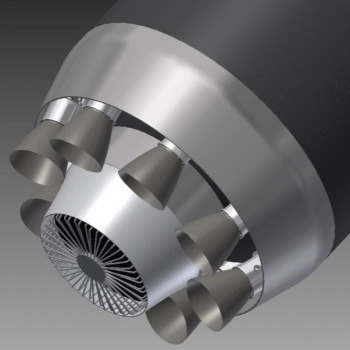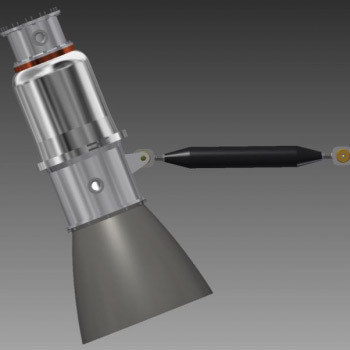Firefly Alpha lightweight reusable booster design

Startup FireFly Space Systems officially announced its first launch vehicle, Firefly α . Although a small company received funding only in January, and there are only 25 people in the staff, an example of recent years shows that small private companies are quite capable of developing even such complex technical products. FireFly Space Systems employs experienced engineers from SpaceX, Blue Origin and Virgin Galactic.
 The most interesting is a number of unusual technical solutions in the design of the launch vehicle. They have been provided for the purpose of maximizing the cost of rocket production and launching satellites weighing up to 400 kg into low-Earth orbit. The company's founders suggest that the cost of the flight will be a record low $ 8-9 million for the client.
The most interesting is a number of unusual technical solutions in the design of the launch vehicle. They have been provided for the purpose of maximizing the cost of rocket production and launching satellites weighing up to 400 kg into low-Earth orbit. The company's founders suggest that the cost of the flight will be a record low $ 8-9 million for the client.To begin with, liquid oxygen and methane are used as fuel. The latter has never been used for missiles of this type. When taking off, the Firefly Alpha will shine with a pleasant blue light, like a regular gas stove.
')

Wedge air rocket engine
At the first stage of the Firefly Alpha install wedge air rocket engine (Aerospike). Such an engine gradually reduces the pressure of the gas jet from the nozzle in order to maintain aerodynamic efficiency at different pressures of the atmosphere, that is, at different heights. This is done to reduce the mass of the rocket: savings are achieved both due to fuel (by 25-30% less), and due to a light nozzle.
The body of the rocket is made of carbon-carbon composite, as sheathing of individual elements of the American space shuttle 1981 release. Only modern technology allows us to make the material stronger and easier.
In general, reusable rockets significantly increase the profitability of putting cargo into orbit. For example, the manufacture and launch of Falcon 9 costs about $ 60 million , while the cost of fuel is 0.3% of the total price, and the cost of materials for making a rocket is 2% of the price. The rest is human labor in assembling, testing components, maintaining documentation, etc. That is why it is so important to land the second step on Earth.

The combustion chamber
Firefly Alpha will be the first in a series of devices, which is going to release FireFly Space Systems. In future models will increase the capacity, but the design will remain the same.
It is hard to believe that this “miracle” will soar, and even more so will land. But in Falcon 9 it was also difficult to believe 10 years ago. And the experimental model Falcon 1, by the way, had about the same small size and carrying capacity of 430 kg. From the first tests to the commercial delivery of cargo to the ISS, only 8 years passed (2006-2014).
Source: https://habr.com/ru/post/229197/
All Articles